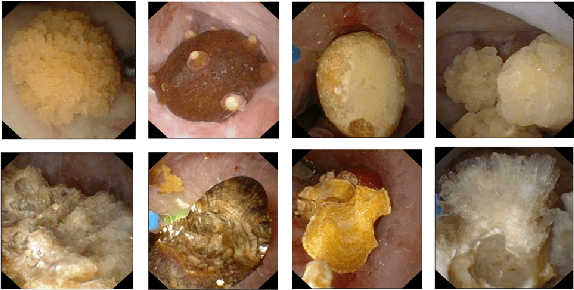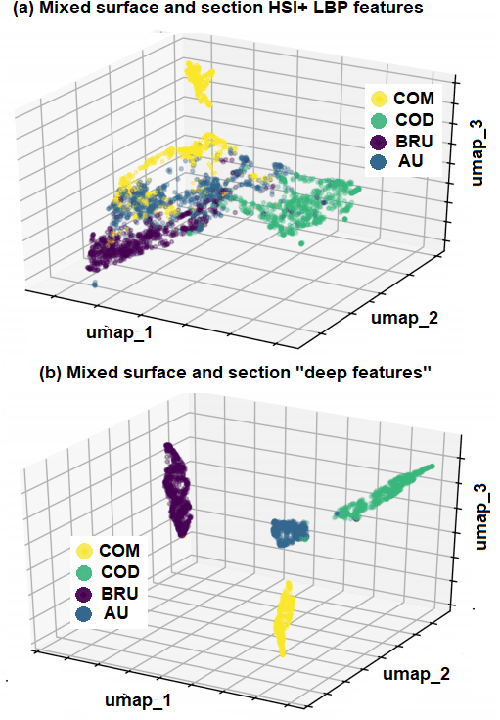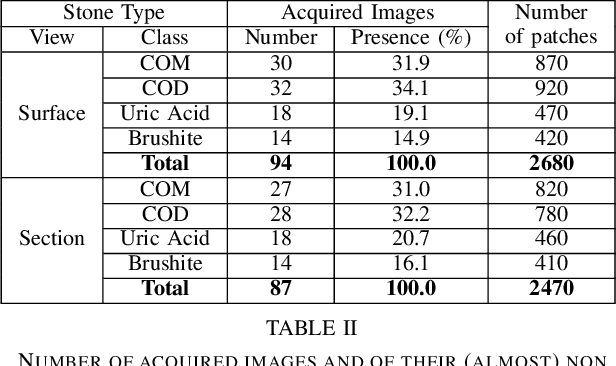Andres Varela
Assessing deep learning methods for the identification of kidney stones in endoscopic images
Mar 01, 2021



Abstract:Knowing the type (i.e., the biochemical composition) of kidney stones is crucial to prevent relapses with an appropriate treatment. During ureteroscopies, kidney stones are fragmented, extracted from the urinary tract, and their composition is determined using a morpho-constitutional analysis. This procedure is time consuming (the morpho-constitutional analysis results are only available after some days) and tedious (the fragment extraction lasts up to an hour). Identifying the kidney stone type only with the in-vivo endoscopic images would allow for the dusting of the fragments, while the morpho-constitutional analysis could be avoided. Only few contributions dealing with the in vivo identification of kidney stones were published. This paper discusses and compares five classification methods including deep convolutional neural networks (DCNN)-based approaches and traditional (non DCNN-based) ones. Even if the best method is a DCCN approach with a precision and recall of 98% and 97% over four classes, this contribution shows that a XGBoost classifier exploiting well-chosen feature vectors can closely approach the performances of DCNN classifiers for a medical application with a limited number of annotated data.
 Add to Chrome
Add to Chrome Add to Firefox
Add to Firefox Add to Edge
Add to Edge